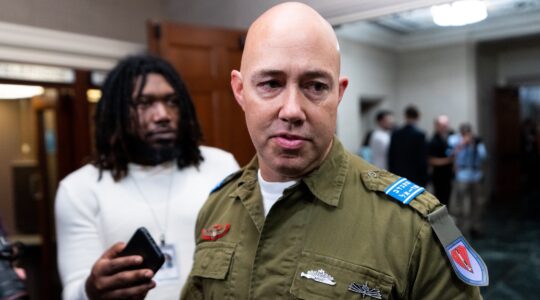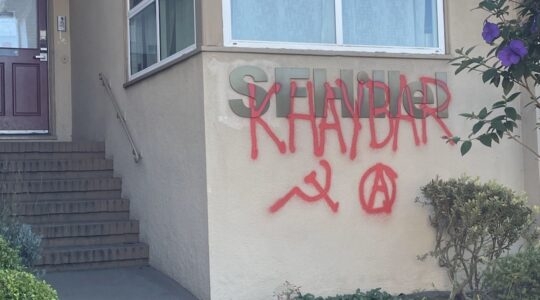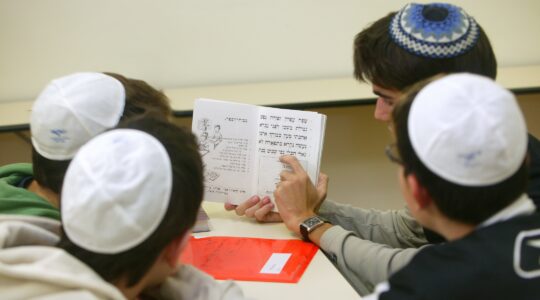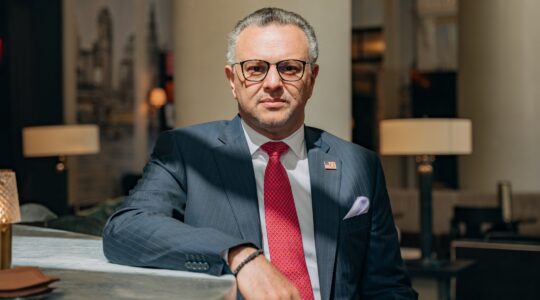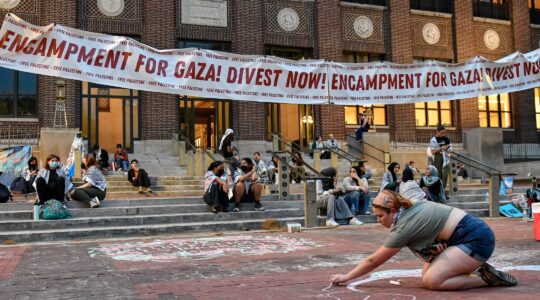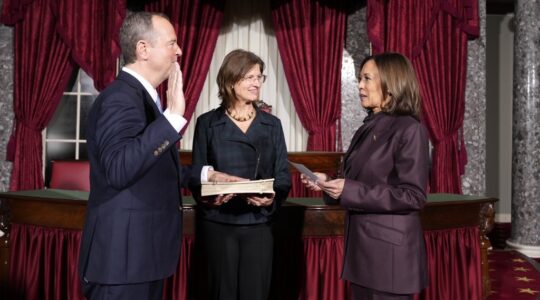SAN FRANCISCO (JTA) — The American Jewish community spends a lot of money counting itself.
So does the United States as a whole: The 2010 U.S. Census cost taxpayers $13 billion.
The Jewish community counts its own for much the same reasons: to get a representative picture of the Jewish population, as well as detailed information to assess needs, raise money, plan services and measure the effectiveness of existing programs.
While the era of the national Jewish study appears to be over — there are no plans for continuing the decennial National Jewish Population Survey, which last time around cost $6 million — local Jewish communal leaders are still investing heavily in surveying their own communities.
Ira Sheskin, director of the Jewish Demographer Project at the University of Miami, says he’s done 55 population studies for local Jewish communities since 1993.
“Local studies turn out to be more important because planning is done at the local level,” he said.
When the recession hit in 2008, three cities scrapped their plans for local studies, according to Sheskin. But in the last year and a half, 10 local studies were completed, and major studies are under way in Cleveland, Chicago and New York City.
Good population studies aren’t cheap. The average price for Sheskin’s crew to do its work is $125,000.
That’s about what Baltimore paid for its 2010 Jewish community study. The federation’s planning vice president, Michael Hoffman, says it was worth every penny, calling the last study Baltimore did in 1999 “transformative.”
The new study, released in January, already has changed how the federation allocates its dollars, Hoffman said. It showed that the number of seniors older than 85 had tripled since 1999, so a task force is now looking at how to increase services to that population.
It also showed that while 55 percent of non-Orthodox Jews between 18 and 34 say that being Jewish is important to them, just 14 percent want to be part of the Jewish community. So the federation is pumping more dollars into grass-roots, non-institutional Jewish programs to help younger Jews connect Jewishly.
The Jewish federation of Greater New Haven just completed its latest study a few weeks ago. While the results are not yet tabulated, demographer and study chair Rena Cheskis-Gold said it is clear already that the community there is not growing. That has strategic implications.
“Each new person is precious to us, so we want to step up our welcome wagon, to give new people an opportunity to learn about different areas of membership in the community,” she said.
The New York study, commissioned by the UJA-Federation of New York at an estimated cost of $1.8 million, will be the single largest Jewish community study ever conducted outside Israel, according to the federation’s research director, Jennifer Rosenberg.
The New York federation conducts such studies every decade or so, and they provide an invaluable picture of the nation’s largest Jewish community, influencing everything from federation allocations to media coverage to government policy decisions.
When the New York City Council approved increased funding for Holocaust survivors, data about Jewish survivors from the federation’s 2002 study “was very important” in informing that decision, Rosenberg said.
The study under way for the first time will ask about second-generation Russian-speaking New Yorkers and Sephardic heritage, and it will devote increased attention to intermarried families and the changing nature of Jewish identity. The results are expected by next summer.
“Being able to quantify things, even if you ‘know’ them, is so important for planning,” Rosenberg said.
Population studies can be conducted in various ways, ranging from the most sophisticated and expensive method of Random Digit Dialing, or RDD, which involves calling tens of thousands of computer-generated numbers, to online surveys of an agency’s own membership base.
Most studies combine RDD with federation or other membership lists, but just how that combination is constructed, and which additional tools are utilized, is a source of much political debate within demographic circles.
Many demographers are not fans of studies that survey a membership base, since it is skewed toward the most active members and cannot be taken as representative of the community as a whole.
Jacob Ukeles, president of Ukeles Associates Inc., one of the partners in the New York Jewish community study and the lead agency in many other local Jewish studies, says that even when a federation acknowledges that limitation — that study results, with time, take on a life of their own, and people begin referring to them as if they offer a complete portrait of the given community.
Last year, a small Jewish federation in the South conducted an Internet survey of its community and asked Sheskin to review the results. They showed 85 percent synagogue membership and 65 percent membership in Hadassah, the women’s Zionist organization.
It turned out, Sheskin said, that someone brought computers to a Hadassah meeting and had everyone fill out the survey there.
“The problem with Jewish community studies is, if you don’t do it right, you might as well not do it,” Sheskin said. “It can be more misleading than helpful.”
But for some smaller Jewish communities that can’t afford a full-scale study, Internet surveys and phone calls to their donor lists is the best they can do. It still provides information the communities can use, say federation leaders in these places.
The Jewish federation in Portland, Ore., recently released the results of its latest Jewish community study, which relied heavily on federation lists. It revealed a Jewish population of some 47,000 rather than the 20,000 that community leaders had believed lived in the area.
Even if those figures aren’t completely accurate, federation executive director Marc Blattner said the study reveals general trends, such as that younger Jews are living in areas that are not well served by established Jewish institutions. That has led the federation, synagogues, schools and JCCs to think about how to move services outside the walls of their agencies.
The federation has hired a full-time outreach and engagement director, and instituted a $300,000 fund to support projects intended to reach the city’s increasingly younger, more geographically diverse population.
Local Jewish leaders aren’t the only ones who use the detailed information that community studies can provide. The foundations and major donors who fund an increasing portion of local Jewish programs want to know where their money is going and whether it is meeting real needs.
“We can no longer rely on national, broad-stroke information about the specifics of our community,” said Sean Mandell, planning director of the Jewish Federation of the East Bay in Oakland, Calif., which on June 21 released the preliminary results of its new community survey. “We need to provide more targeted research and information about our community, and that speaks to the changing nature of philanthropy more than to the absence of the NJPS.”
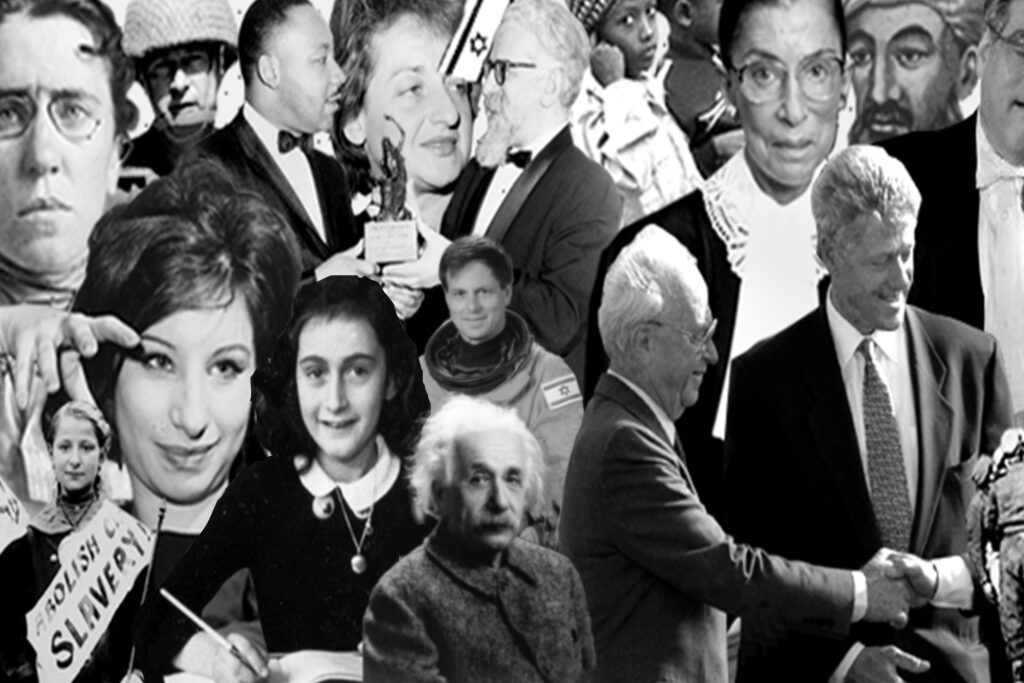
Help ensure Jewish news remains accessible to all. Your donation to the Jewish Telegraphic Agency powers the trusted journalism that has connected Jewish communities worldwide for more than 100 years. With your help, JTA can continue to deliver vital news and insights. Donate today.
